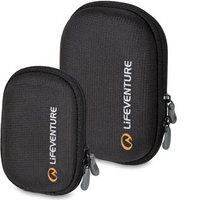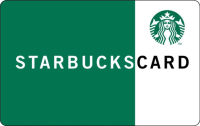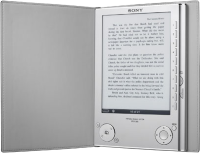Noteboard - A foldable pocket-sized whiteboard
30 Sep 2013Digital technology is a huge part of my life and who I am. I’m one of those people who actually finds it relative easy to read on a screen rather than having a preference for a paper book. So it’s unusual for me to find myself writing a blog post that is about something rather analogue - but it’s something I think fills a niche in the way I work and I expect could for you to. It is something brilliantly simple and fits in your pocket - a foldable whiteboard.
Why I wanted a Noteboard
In my previous work roles whiteboards were one of the most useful tools I had. I always made sure my team had one available and we used them practically every day. It gave us somewhere to jot thoughts, messages and somewhere to gather around to help us communicate.
I came across Noteboard quite by accident. It was a related video link on some YouTube video I had watched. After watching the video I was totally sold on the idea. These days I work from a mixture of my home office and client sites. Having a take anywhere whiteboard means that I now don’t have to rely on flip charts and whiteboards being available at client sites and since it is foldable, you can actually create content even while you are on the go just by folding the board in the right way.
What exactly is it?
The Noteboard (as created by Robin Thomas) was originally conceived as a set of index cards held together between strips of packing tape. The production version however was a little more sophisticated being a sheet of card with gaps for folding sandwiched between two laminate layers of clear plastic. One side of each card is blank and the other side is printed with a range of squares and hexagons (probably familiar to anyone who has drawn role playing game (RPG) maps).
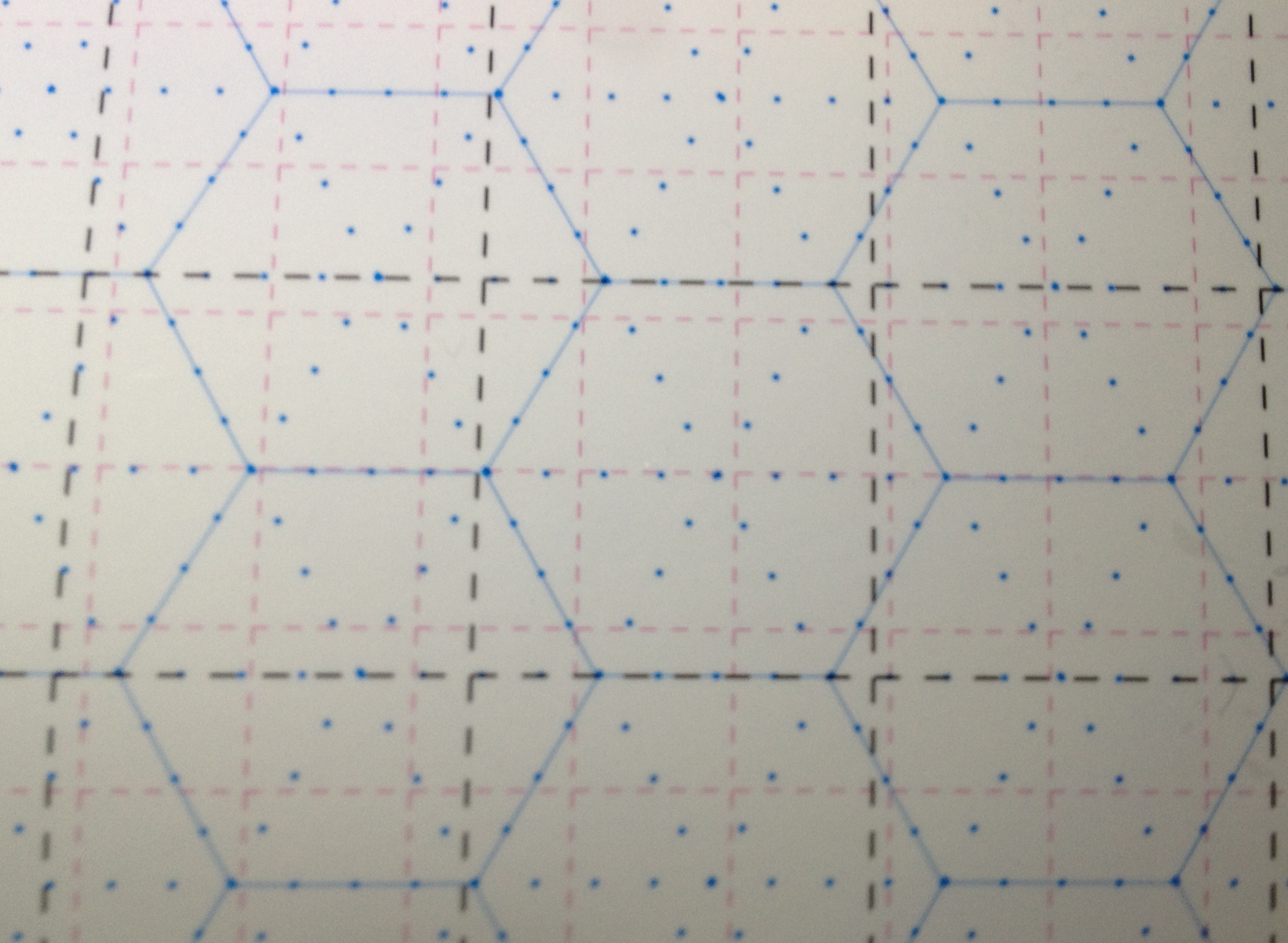
The Board
The board can be folded out from the compact 5” x 3” single card size up to 35” x 15” (a 7 x 5 grid if cards) and comes with a fine point black pen and a microfibre pouch. The pen cap includes a small eraser block and the pouch doubles as an eraser too.

The Pen
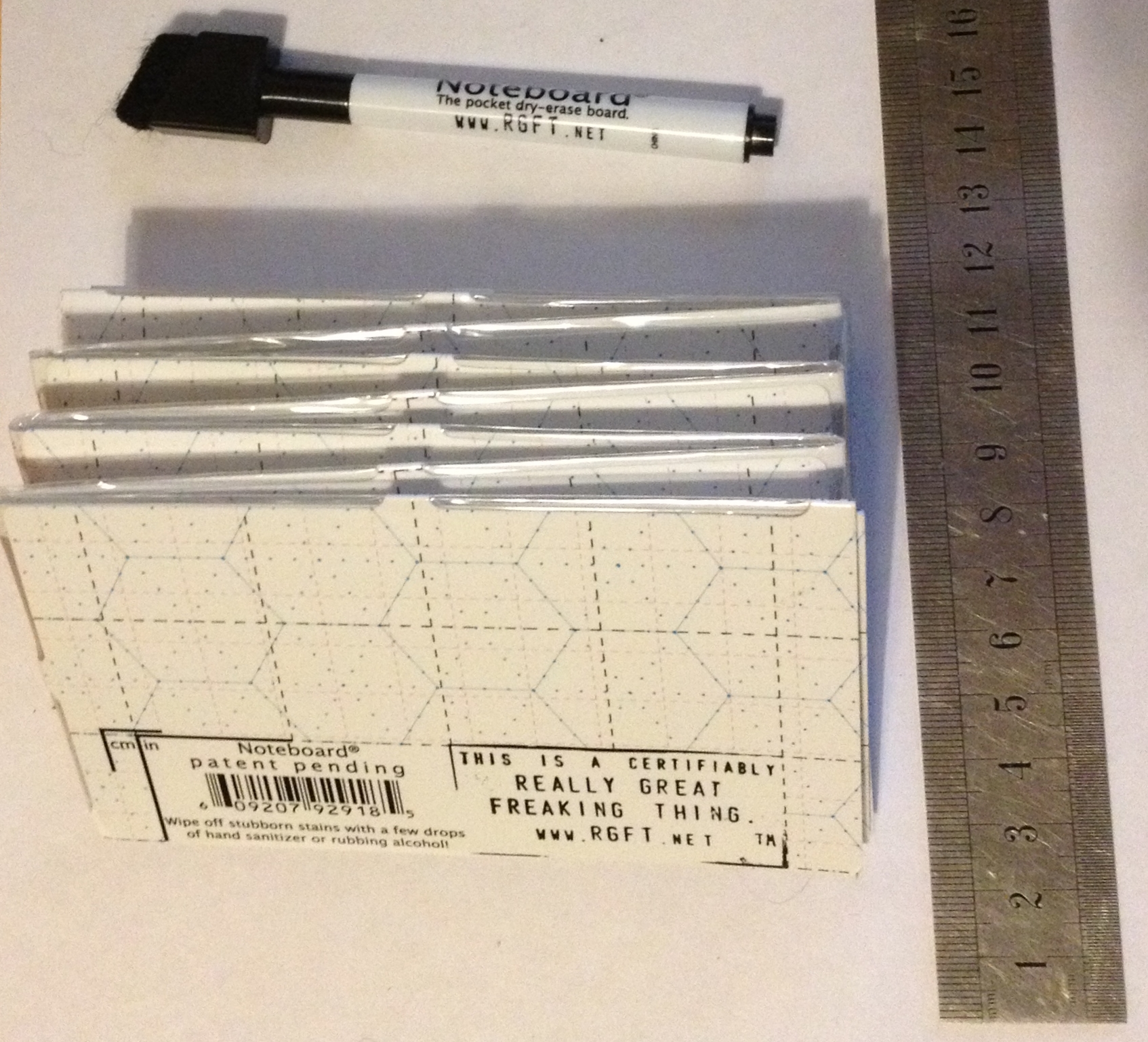
Compact
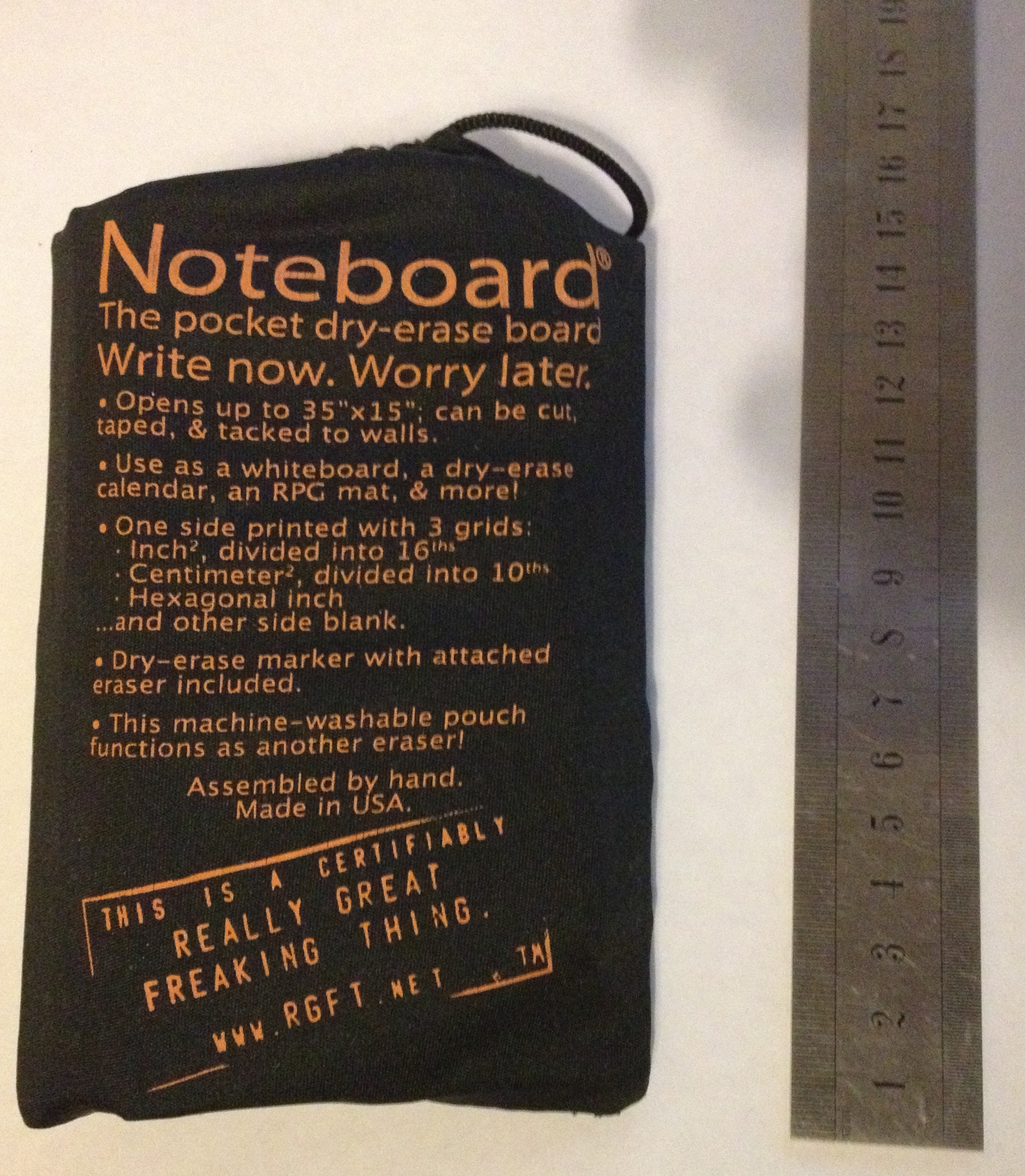
Stored in a Pouch
Purchasing Noteboard
Noteboard is available for shipping from the US, but there are other resellers including one in the UK from whom I purchased my first batch of Noteboards. You can even purchase a Noteboard from Amazon.
There are also instructions on the Noteboard web site about how to create your own so you can do that and customise it to your own requirements, but personally I chose to support those making a go of it with Noteboard and figured that they would probably make a better job of it than I would as they’ve had a lot more laminating practice.
Making Noteboard Deluxe
One of the aims for producing Noteboard was to make it relatively cheap and so the Noteboard package is probably best described as “functionally simple”. Whilst this was adequate for my needs I found it a simple matter to expand the package a little to make it a little bit better for a relatively small cost.
1. Pens [1-pens]
The first of my changes was to increase the pen options. After some Extensive research I managed to locate a company that stocked similar pens to those included in the standard package and cold deliver to the UK for a reasonable price.
The set I ordered consisted of six pens of various colours (including a black). Each pen is sized the same as the ne included in the original pack. Each pen cap again includes an eraser block as well as a small magnet. Unfortunately the magnets are very weak and so can’t be used to pin the Noteboard to a metallic surface, but if you happen to be using your Noteboard on a suitable metal surface then you may be able to suspend your pens for handy access.
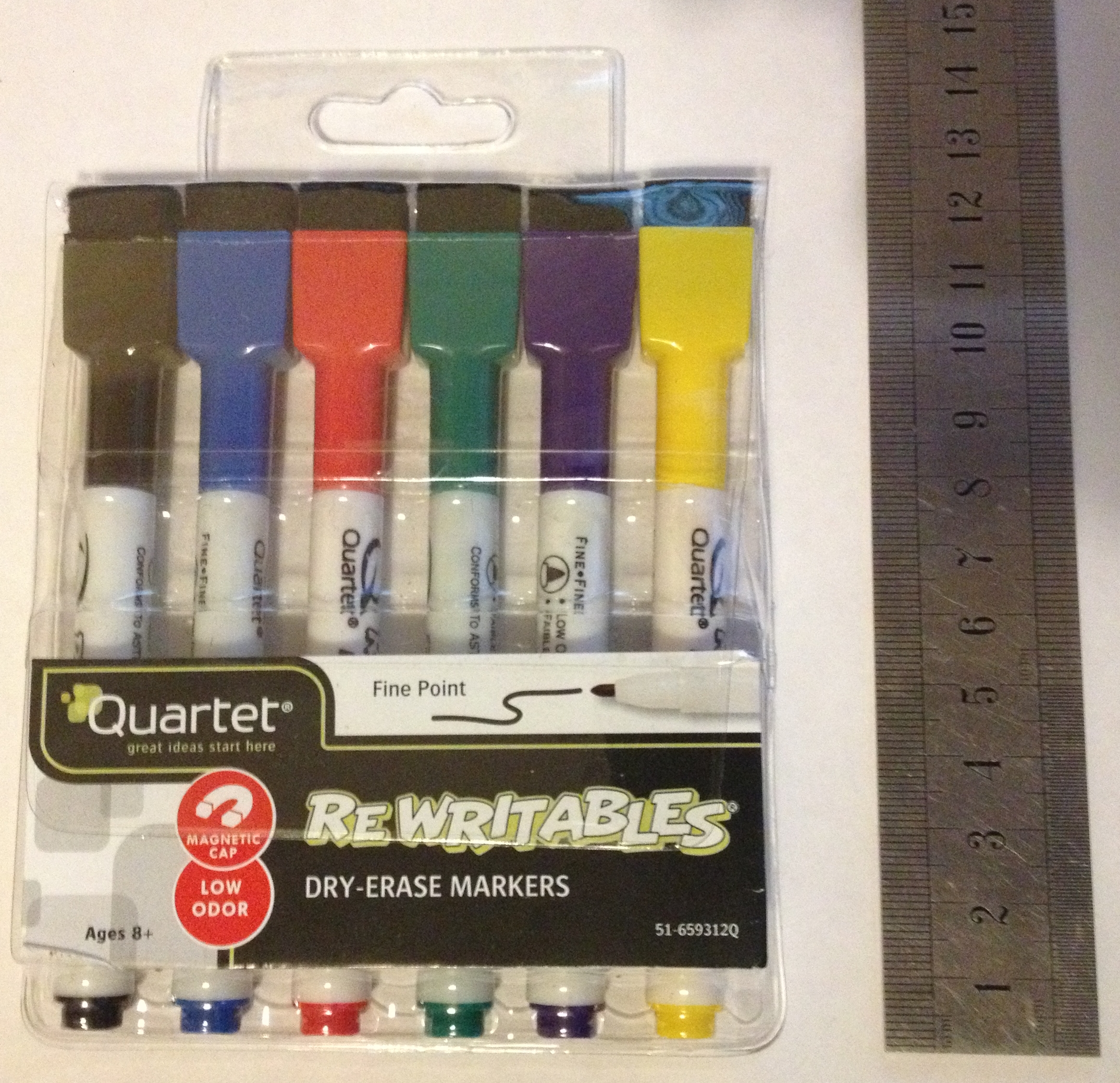
Extend Your Colour Palette
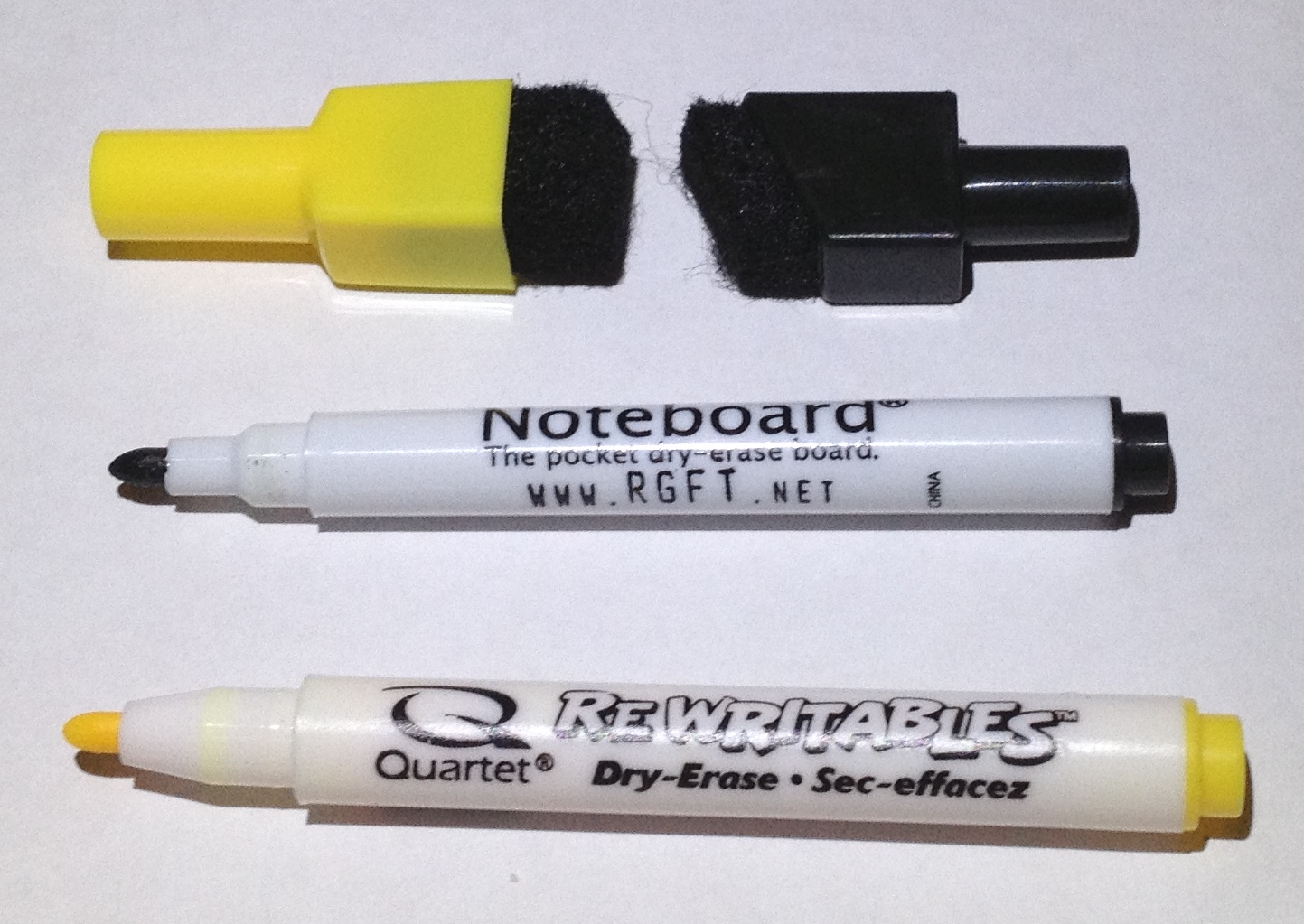
These Pens Are Almost Identical to the Official Pen

The Caps have Magnets
This is the most expensive addition to the package at £7.64 (£4.99 + £2.65 p&p), but at just over ?1 per pen I think it is still good value.
2. Adhesive [2-adhesive]
The next addition was to include some adhesive to allow me to stick the Noteboard to a wall. There are a number of malleable coloured tacky substances that you could use. The one I’m using happens to be blue. Since I wanted it to take up just a small amount of space in the bag (after all there are six more pens in there now) I’m using a slimline SD card case to hold the adhesive. If you don’t have one available, you could always stretch your adhesive out flat and place it within the folds of the Noteboard itself.
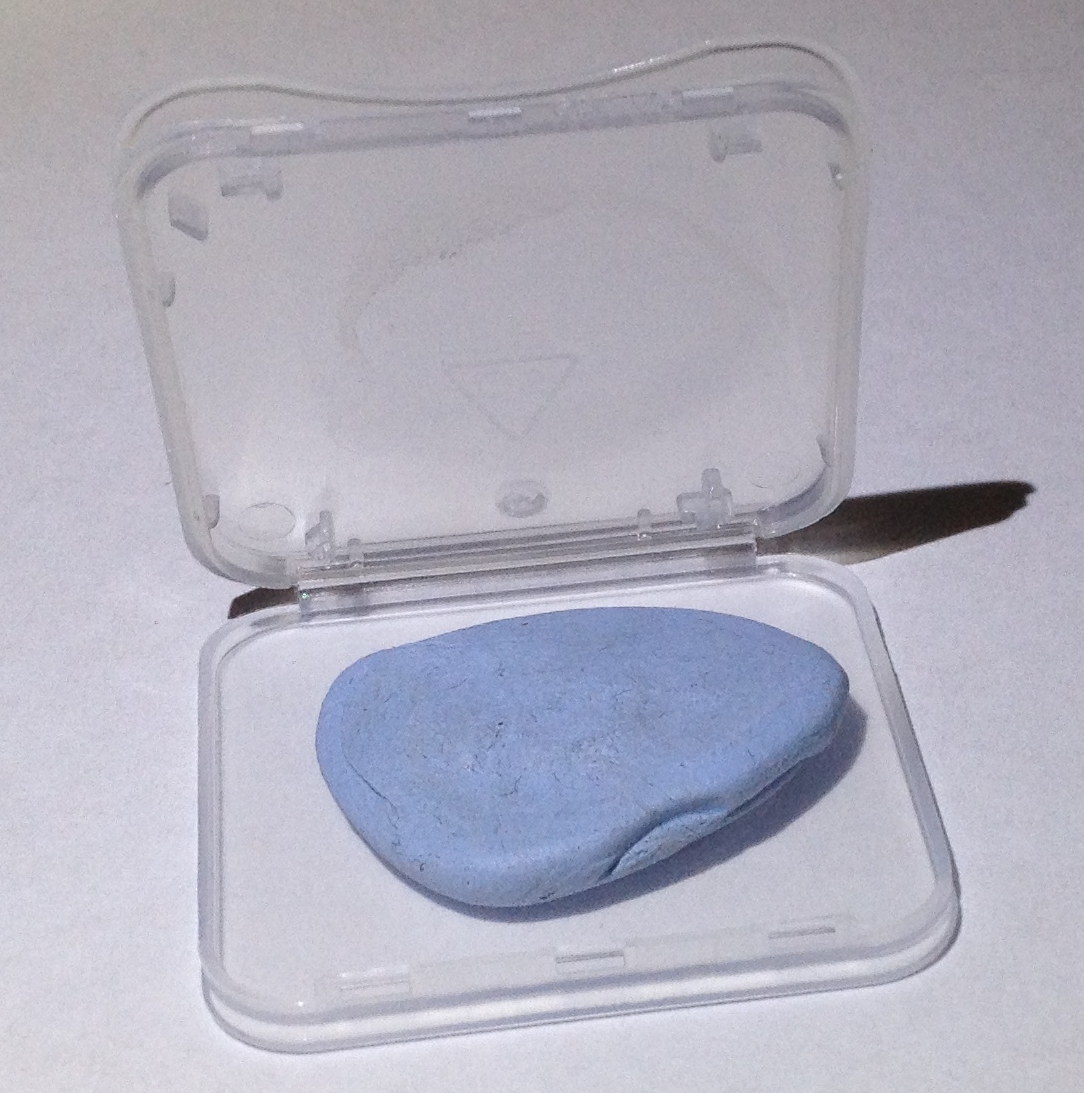
Wall Friendly Sticky Stuff
The cost of this for me was effectively nothing (I already had the case and some adhesive) and I expect most people would be able to lay their hands on an adhesive without much trouble. even a fresh pack of adhesive would cost less than a couple of pounds and as mentioned above the case is not essential.
3. Bag Toggle [3-bag-toggle]
The microfibre bag is a draw string bag and whilst you can pull the neck tight, it fairly easily works loose. Once the extras above are added into the bag then it seems only sensible to add a draw string toggle to the bag. The string for the bag is quite thin so a single hole toggle is not ideal as it will slide off too easily. Instead a double hole toggle is preferable.
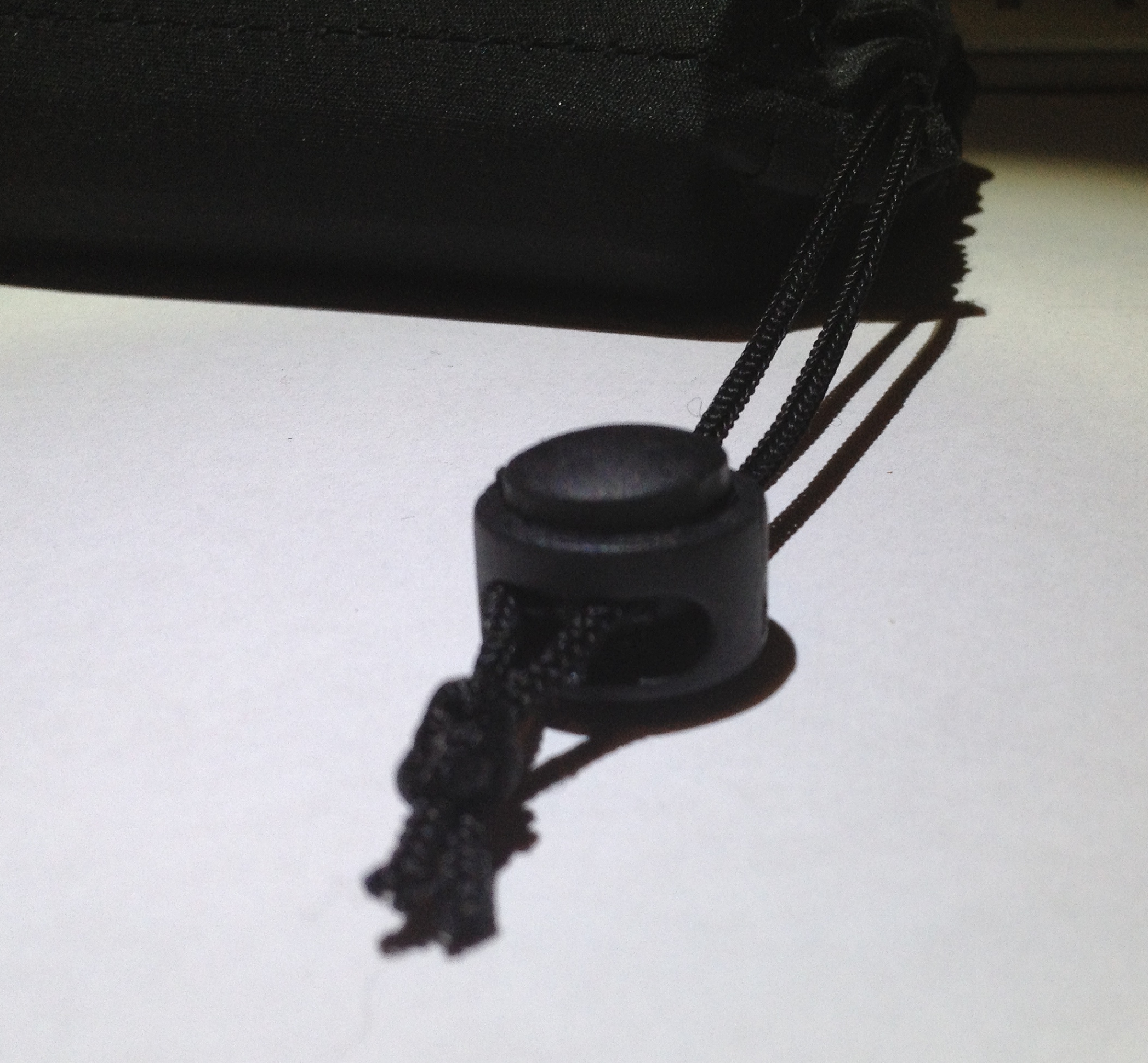
Twin Eyelet Toggle
You can pick up toggles from an outdoors shop for less than a pound. Since I had ordered several Noteboards I ordered a pack of twelve 5mm toggles for £2.66 (~22p each).
Using Noteboard
For me Noteboard works great as a source for snapping a note into Evernote using my smart phone camera and the Evernote app. I much prefer this over paper notes as it means that there’s no wasted paper … though my preference for note taking still remains digital as my writing speed has deteriorated massively since I began my professional career in IT. Digitally archiving any whiteboard content is probably good practice these days irrespective of how portable it is.
One thing I didn’t expect initially was to find as much use for keeping the board folded. Keeping it at a reduced size can be useful when collaborating around a small table; such as on a train or in a coffee shop.
Just to round things off, here’s a few ideas for using Noteboard…
- A reusable scribble pad for children.
- Q&A - unfold part of the board to reveal the answers.
- Drawing roads and tracks for toy cars and trains.
- Temporary signage.
- A car windscreen sun reflector.
- And of course … as a whiteboard.
 Scroll the menu to find all the places to visit
Scroll the menu to find all the places to visit
